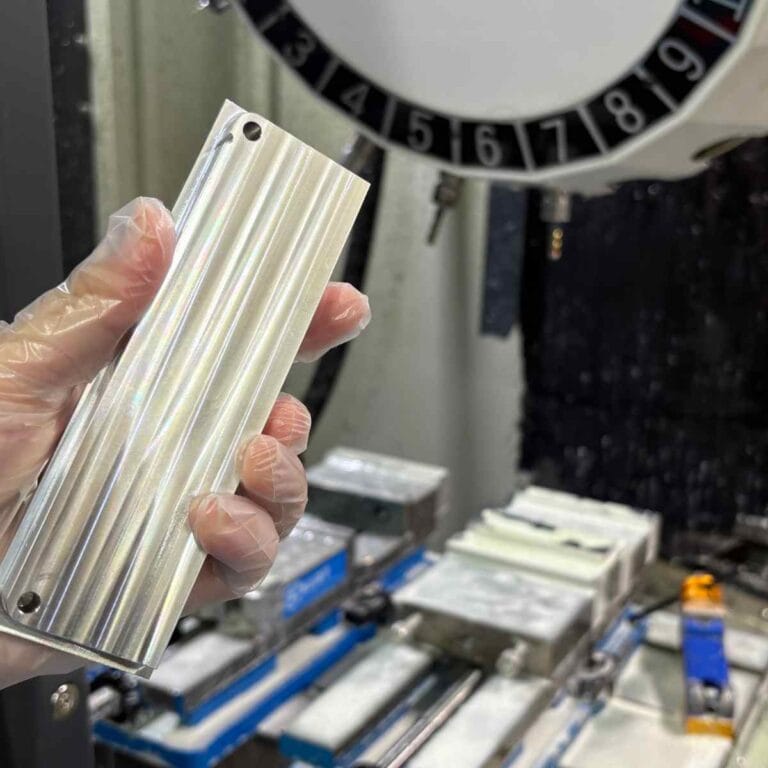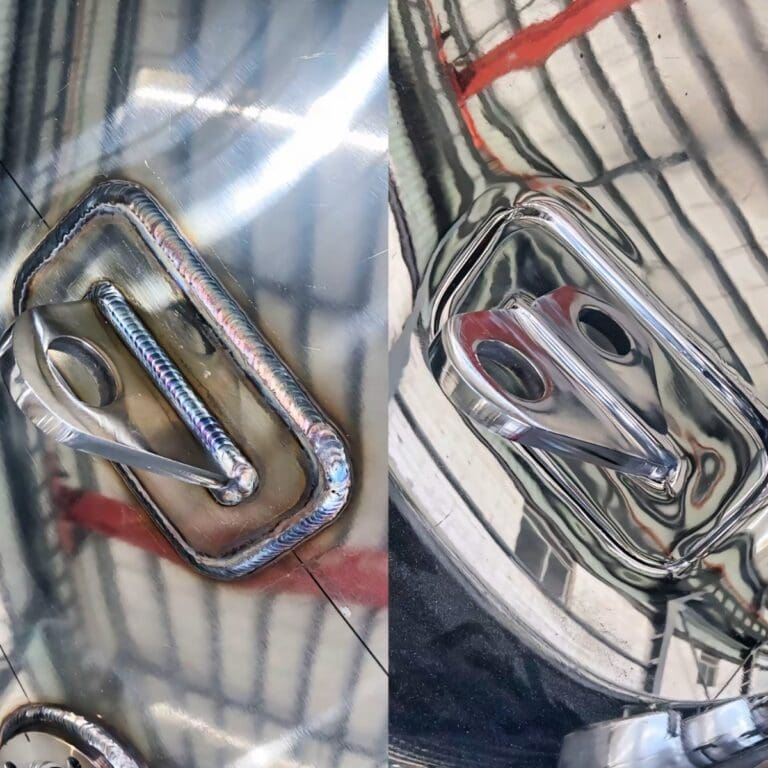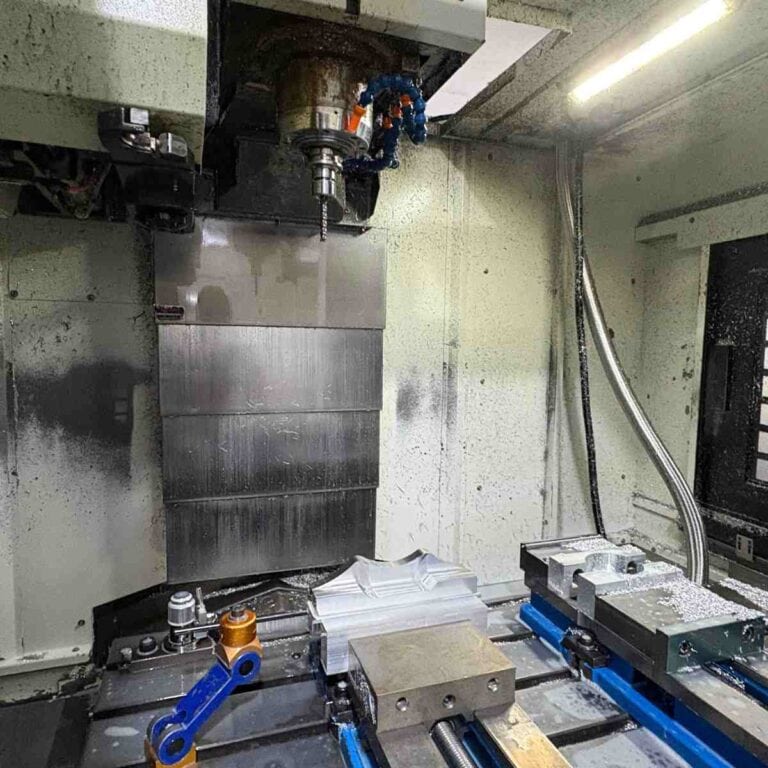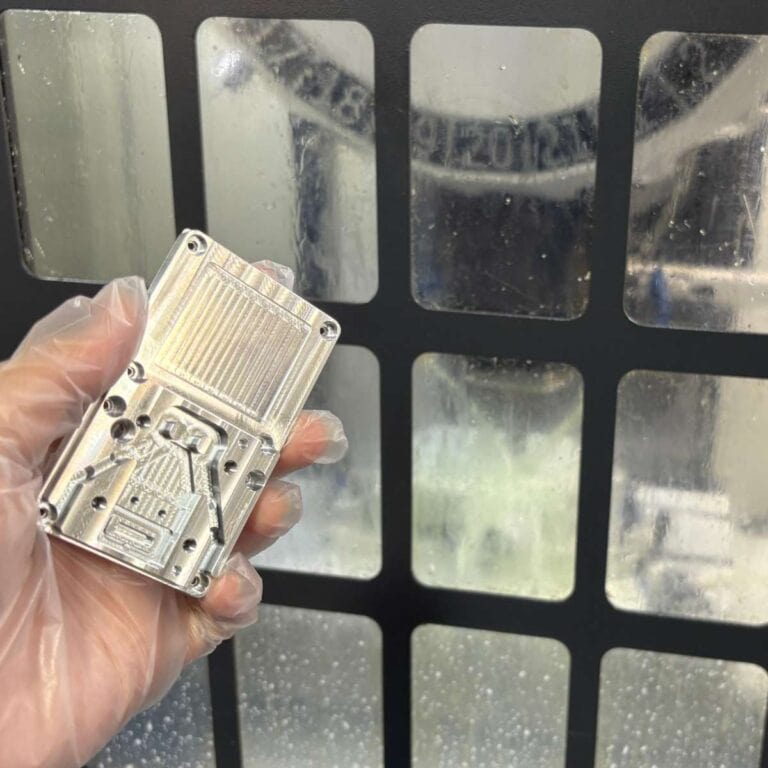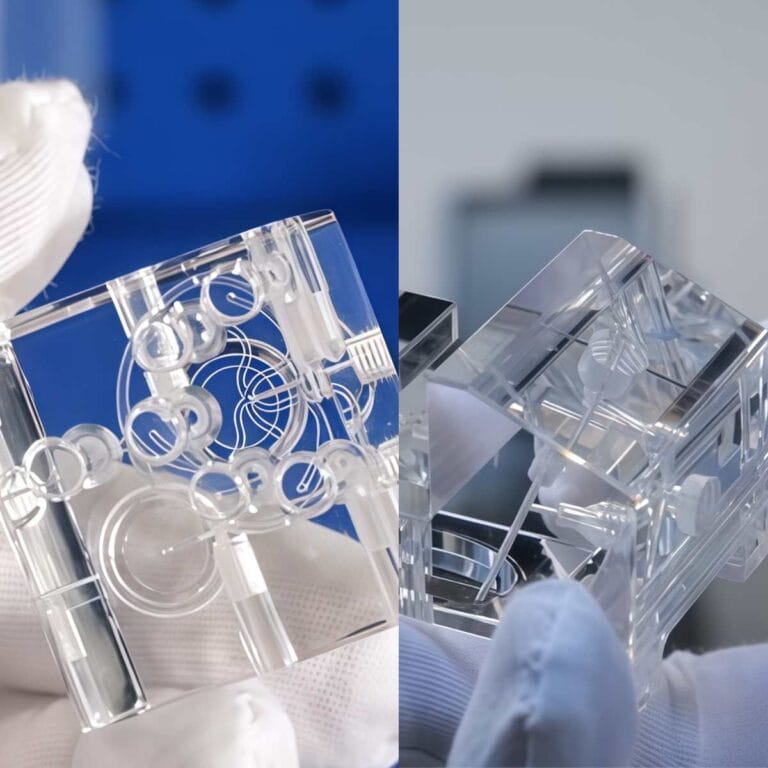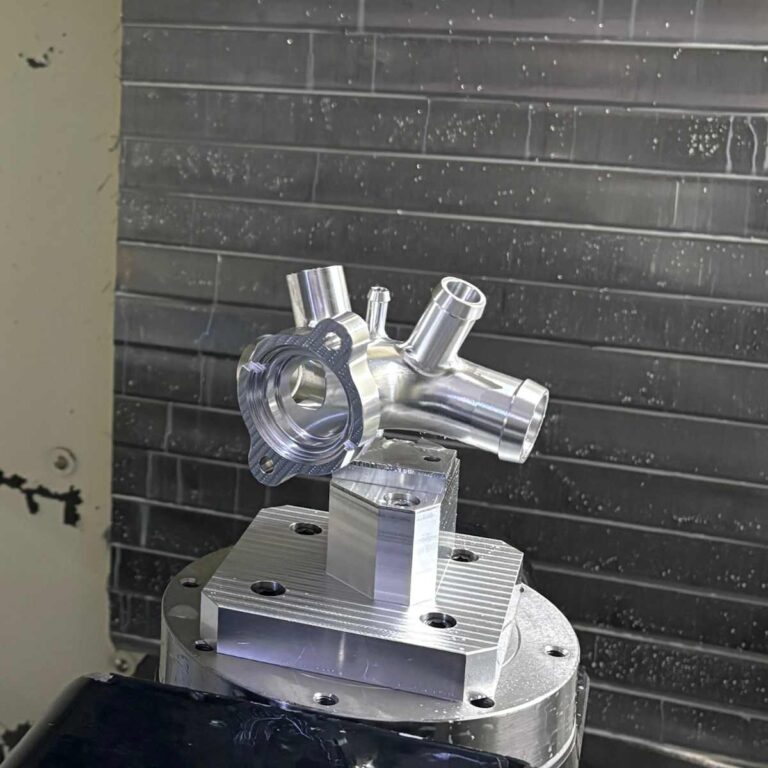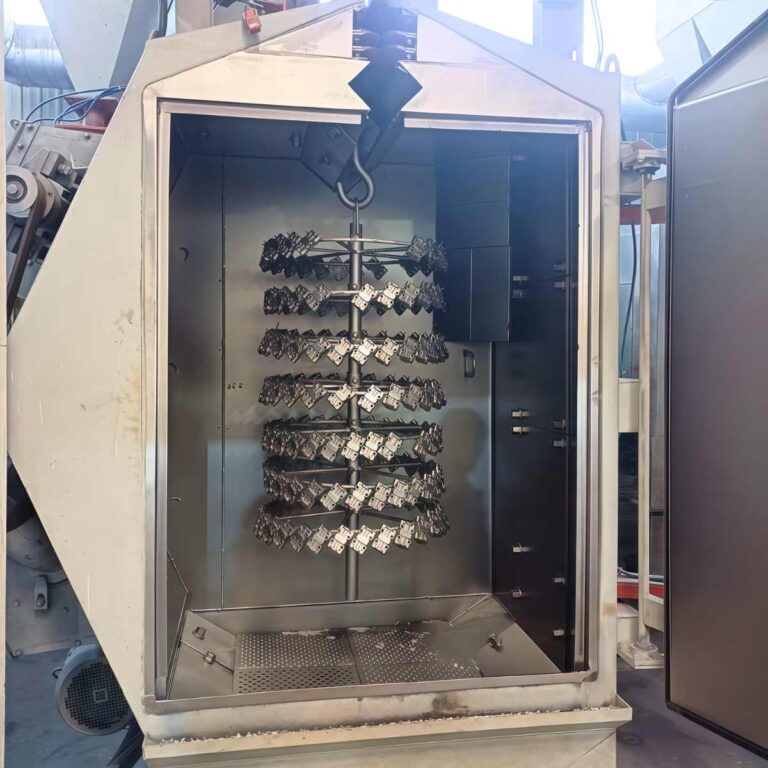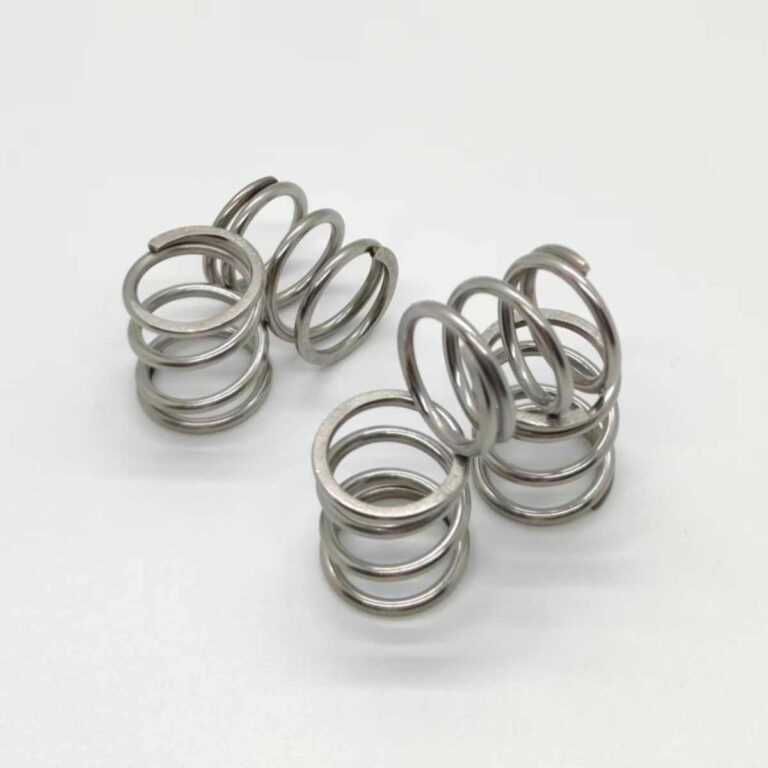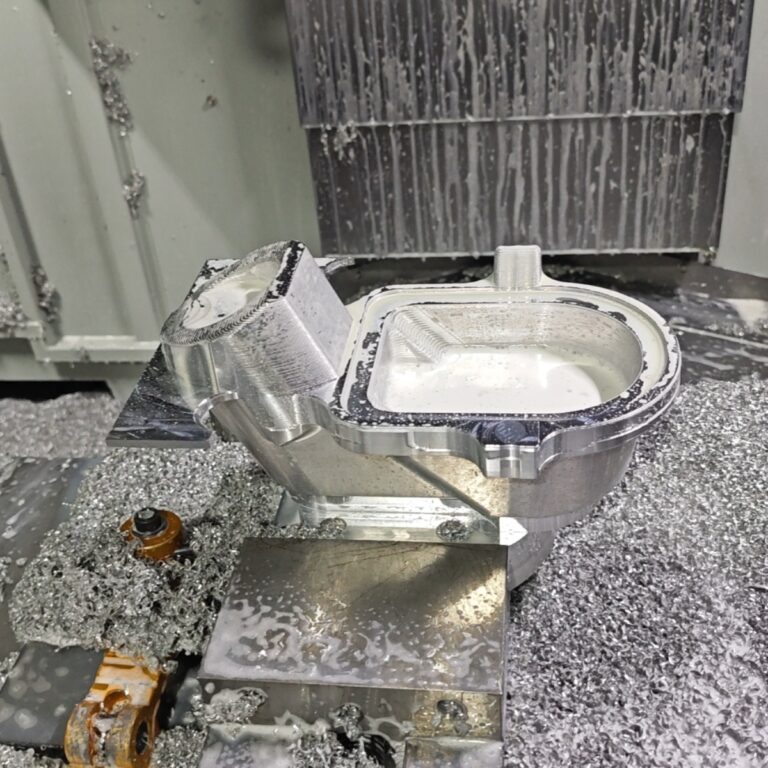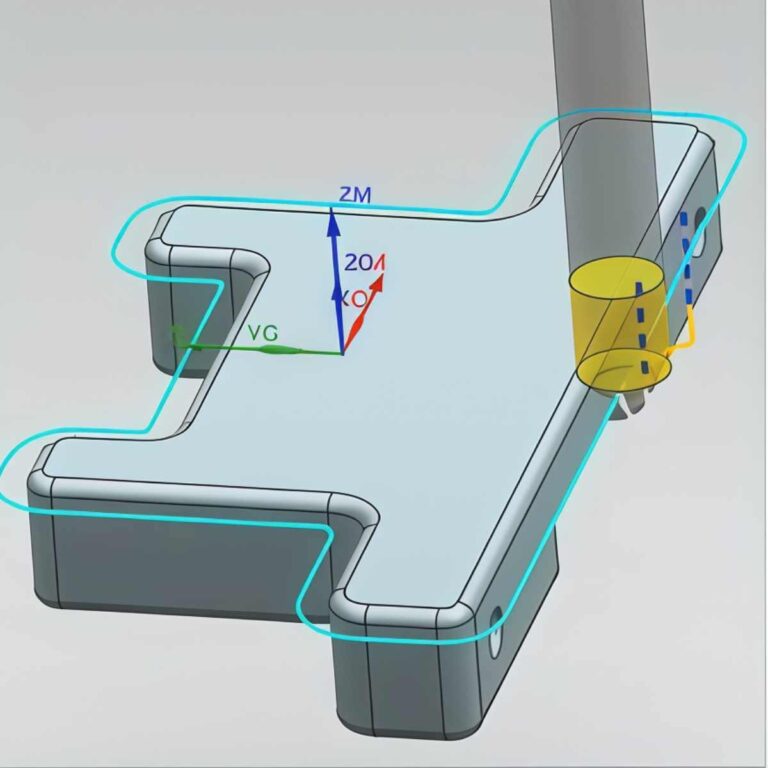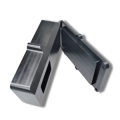In the process of engineering manufacturing, product design and material selection, “hardness” is often regarded as one of the key indicators for evaluating material performance. But what does material hardness represent? What are the differences between different test methods? How to understand units such as HB, HRC, and HV? I will systematically sort out the definition, classification, units and various test methods of material hardness, and take you from basic cognition to practical application, and fully grasp the actual meaning and impact of the core parameter “hardness” in metals, plastics, and composite materials. Whether you are an engineer, a materials scholar or a manufacturing practitioner, this will be your one-stop guide to hardness knowledge.
What Is Material Hardness
In my manufacturing experience, material hardness often determines the machinability, wear resistance and ultimate service life of parts. Simply put, material hardness refers to the ability of a material to resist external force intrusion, scratching or deformation. This is not an isolated indicator, it is closely related to the material’s tensile strength, plastic deformation ability and corrosion resistance. For example, steels above HRC 60 are widely used in mold manufacturing because they can withstand extremely high contact pressure and long-term friction.
Hardness does not mean “hard but not brittle”. Take titanium alloy as an example. Although its hardness is not as good as some high-hardness steels, it has become a main material in the aerospace field due to its excellent strength-to-weight ratio and toughness. On the other hand, non-metallic engineering plastics such as PTFE have low hardness (Shore D hardness is about 50-60), but have excellent self-lubrication and chemical stability.
In actual work, I often make preliminary judgments on the processing parameters of materials based on hardness indicators. For example, steel with a Brinell hardness of more than 250 HB usually requires the use of high-hardness tools and a reduced feed rate. For parts that require surface treatment, too high a hardness may also lead to reduced coating adhesion. These must be considered clearly in advance during the design and process stages.
Understanding the definition and influencing factors of material hardness not only helps us optimize the processing technology, but also enables us to make more scientific judgments in the material selection stage and ensure a balance between product performance and cost.
Material Hardness Data Chart And Standards
In the fields of CNC machining, heat treatment, mold manufacturing, etc., the hardness value directly determines the material’s cutting difficulty, wear life, and application scenarios. Mastering the hardness conversion table and international standards is an important basis for engineers to select materials, debug, and control quality.
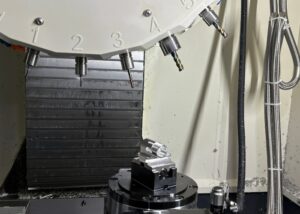
The following is a hardness conversion and standard data I compiled, which can cover common needs from soft polymers to high-hardness steels :
Typical hardness comparison table of various materials
| Material Type | Brinell hardness HB | Rockwell hardness HRC | Vickers hardness HV | Mohs hardness | Tensile strength MPa (estimated) |
| Plastic (ABS, POM) | 10–40 | No data | 10–30 | 2–3 | 30–60 |
| Pure aluminum (1100) | 20–35 | HRB 25–30 | 25–40 | 2–3 | 90–150 |
| Aluminum alloy (6061-T6) | 90–100 | HRB 60–70 | 100–120 | 4 | 290–310 |
| Aluminum alloy (7075-T6) | 130–160 | HRB 80–85 | 160–180 | 5–6 | 540–580 |
| brass | 60–100 | HRB 50–70 | 80–130 | 3–4 | 200–300 |
| Copper (C110) | 50–100 | HRB 40–60 | 80–130 | 3 | 200–280 |
| Steel (Q235) | 105–125 | HRC 10–15 | 110–140 | 4–5 | 350–400 |
| Quenched and tempered steel (42CrMo) | 200–320 | HRC 20–40 | 220–350 | 6–7 | 800–1100 |
| Tool Steel (D2) | 400–600 | HRC 58–62 | 600–800 | 8–9 | 1500+ |
| Tungsten Carbide | — | HRA 85–90 | >1000 | 9–9.5 | 2000+ |
Common hardness conversion table (reference value)
| HRC | HB | HV |
| 20 | 225 | 240 |
| 30 | 285 | 300 |
| 40 | 350 | 380 |
| 50 | 435 | 460 |
| 60 | 545 | 600 |
Note: Due to the differences in elastic modulus and yield behavior of materials, the conversion table is only for engineering estimation and the specific measurement should still be based on the original scale.
Industry standards and scope of application
| Standard No. | Name/Method | Applicable materials and scenes |
| ASTM E18 | Rockwell hardness test method | Universal for metals, fast on-site measurement |
| ASTM E10 | Brinell hardness test method | Large size parts, coarse grain castings |
| ASTM E384 | Micro Vickers/Knoop Hardness Test Method | Analysis of thin plates, coatings, and heat-treated layers |
| ASTM A370 | Mechanical properties test standard for steel materials | Structural steel, standard parts performance report |
| ISO 6506 | International Standards for Brinell Hardness of Metal Materials | Equivalent to ASTM E10 |
| ISO 6507 | International Standards for Vickers Hardness of Metal Materials | Equivalent to ASTM E384 |
| ISO 6508 | International Standards for Rockwell Hardness of Metal Materials | Equivalent to ASTM E18 |
| ISO 16859 | Portable Leeb Hardness Test Standard | Field testing or large parts |
| ISO 14577 | Depth Sensing Hardness Test (Instrumented) | Nanoindentation, research/high-end testing |
Engineering suggestions and selection reference
When machining carbide or die steel, it is recommended to use Vickers hardness to evaluate the surface hardness after heat treatment and control it in the range of HV 550–800 to ensure tool life.
For non-ferrous metals such as aluminum and copper, Brinell hardness HB is usually used for general testing. The higher the value, the more difficult it is to process, and the tool material and feed rate need to be controlled.
When the test object is small, thin, or surface treated, the Knoop/Vickers microhardness method is recommended, as the results are more stable and more adaptable.
If the space on site is limited, the Leeb hardness HL can be used , but it is recommended to record the temperature, humidity and support conditions at the same time to avoid error amplification.
These data and standards are essential technical tools for me when dealing with high-strength steel, heat-treated parts and composite structural parts. Especially when cross-departmental coordination is required (such as the quality department and the customer’s technical department), using unified standards and data can effectively reduce communication costs and quality disputes. For engineers engaged in CNC processing, material testing, mold manufacturing, and mechanical design, it is strongly recommended to collect and use the above tables.
Types Of Material Hardness
In actual engineering applications, material hardness is not a single indicator, but reflects the different responses of materials to external forces through different test methods. Common hardness types mainly include indentation hardness, scratch hardness, rebound hardness and microhardness. Each type has different corresponding test mechanisms, application scopes and representative meanings. Understanding these classifications will help us choose the most appropriate test methods and evaluation criteria according to different needs.
give priority to indentation hardness , such as Rockwell or Brinell, in tool steel selection because it directly reflects the material’s ability to resist indentation under heavy loads. When studying coating adhesion or ceramic film performance, scratch hardness testing (such as using Mohs hardness or nanoindenter) is more critical , revealing the material surface’s resistance to small, sharp objects.
In some applications that require elasticity or impact performance (such as springs and impact parts), rebound hardness testing becomes an important basis for judging material toughness, such as Shore hardness (Scleroscope). Microhardness (Knoop, Vickers) is very common in the fields of electronic components, thin films and microstructures. They can evaluate the hardness of small areas and reveal changes in the thickness of heat treatment or carburized layers.
In addition, special attention must be paid to distinguishing between the concepts of “surface hardness” and “volume hardness”. Some materials, such as carburized steel, can have a surface hardness of more than HRC 60, while the core still maintains good plasticity and toughness. This “soft core and hard shell” structure is precisely the reason why it is widely used in high-strength gears and shaft parts.
Understanding the different types of material hardness is like mastering a “multi-functional ruler” that can accurately evaluate material performance . Every product, every process, and every industry background may require you to choose a different hardness definition to measure whether the material is suitable – and this is the basic skill that I never ignore in engineering design and manufacturing.
Common Hardness Units And Conversions
In daily CNC processing and material selection, the inconsistency of hardness units is one of the challenges I encounter most often. The customer’s drawing is marked with HRC, the supplier provides HB, and the quality inspection report uses HV, and occasionally Mohs or HL units appear. If you are not clear about the meaning and correspondence of these units, it may lead to incorrect material selection, processing deviation, and even return risks.
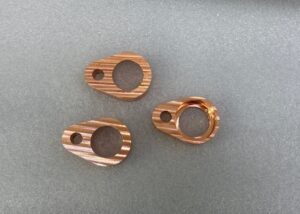
Each hardness scale corresponds to a different test principle and usage scenario. For example, Brinell hardness is suitable for cast iron and structural steel, Rockwell hardness is widely used for mold steel and heat-treated parts, and Vickers hardness is suitable for testing small areas or thin layers of materials. Mohs hardness is used for non-metallic materials such as ceramics or glass, while Leeb hardness is a powerful tool for portable on-site testing.
I once encountered a project where the customer required HRC 60 mold steel, but the supplier only provided the HV value. We consulted the authoritative conversion table and confirmed that HV 700 corresponds to HRC 60, which allowed us to smoothly advance the production. This is the practical significance of hardness unit conversion.
Understanding the principles and conversion relationships of these units can not only improve communication efficiency, but also help us control material properties more accurately. Especially in multinational projects and projects with multiple standards, mastering this knowledge is a necessary skill for becoming a professional engineer.
Brinell Hardness
Brinell hardness is the first hardness unit I came into contact with. Especially when processing cast iron, copper alloy or structural steel, HB is the indicator most often mentioned by customers. The test method is to use a steel ball with a diameter of 10mm to press into the material surface under a load of 500kgf to 3000kgf, and then measure the indentation diameter to calculate the hardness value.
The advantage of Brinell hardness is that it can reflect the material’s ability to deform over a wide range of plastics, which is closer to the actual stress environment. I once handled a batch of automobile wheel hub blanks. The customer required HB180-220. We used a 2.5mm steel ball + 187.5kgf force test to accurately match their mechanical strength requirements.
The disadvantage is that the test indentation is large and it is not suitable for precision parts or thin-walled parts. However, it is still one of the most representative hardness methods in the inspection of large quantities of structural parts.
Rockwell Hardness
Rockwell hardness is the most widely used unit in the CNC machining industry. Its advantages are fast, no need for microscopic measurement, and a variety of test methods, covering soft to super-hard materials. For example, HRB is used for soft materials such as copper and aluminum, while HRC is the “standard” for heat-treated steel.
I use the HRC standard most often, especially for mold steel (such as SKD11, H13), after processing, customers often require a hardness of 58-62 HRC. By measuring the indentation depth with a 150kgf load and a 120° diamond cone indenter, the result can be obtained within 10 seconds. Once we processed a batch of injection mold cores, and the HRC test showed only 55. Later, it was confirmed that the heat treatment process had deviations, and timely repairs avoided product performance defects.
The convenience of Rockwell hardness test is suitable for frequent testing at the production site, but it is not suitable for materials that are too thin or have too thin surface treatment layers.
Vickers Hardness
Vickers hardness is suitable for measuring the local hardness of very small or very thin parts, such as coatings, weld heat-affected zones, or microstructures. I often use HV when machining high-precision medical parts, such as titanium alloy implants. We use HV to test thin-walled areas, and the results are often in the HV 300-350 range.
The HV test uses a 136° diamond quadrangular pyramid indenter to measure the diagonal length of the indentation after pressing into the material under a load (usually 10g to 1kg). It has high accuracy and is suitable for laboratories or high-demand occasions.
For example, in a precision bushing project, the customer required the surface to reach HV700 or above after heat treatment. Only HV testing can identify whether the local hardening is evenly distributed. Although the equipment is expensive and requires high operation, it is irreplaceable in the high-precision industry.
Mohs Hardness
Mohs hardness is more like an entry standard for judging whether a material is “hard” in daily life. It constructs a rating system from 1 (talc) to 10 (diamond) based on 10 natural minerals and is widely used in ceramics, glass, gemstones and some engineering plastics.
Although it is not an industry standardized test, I have seen “Mohs 4–5” in customer specifications for PEEK materials, which tells me that it is softer than aluminum but harder than ABS. It is a quick way to estimate scratch resistance in the initial selection of non-metallic materials.
Leeb Hardness
If you want to do hardness testing on a construction site, assembly site or large equipment, HL is the most convenient choice. Leeb hardness is a dynamic rebound method that measures the ratio of the rebound speed to the impact speed by striking the hammer on the material surface.
I have used Leeb hardness tester in the inspection of wind power flanges, marine bearings, and heavy steel structures. It can obtain the value within 10 seconds, and the error is controlled within ±5%. For example, if the customer requires HL > 480, we can directly determine whether the heat treatment is in place.
The disadvantage is that HL requires a relatively flat surface of a large workpiece and is not suitable for small precision parts. However, its portability and efficiency make it very practical in large-scale manufacturing and field inspection.
Microhardness Unit
Knoop and low-load Vickers (Micro Vickers) hardness are commonly used to measure the hardness of microscopic areas of a material with very small loads (from 10g to several hundred grams). Knoop uses a diamond-shaped indenter that is suitable for long, shallow indentations without damaging the sample cross section.
When I was studying the hardness of TiN coatings and PVD coatings, I relied on Knoop hardness. The thickness of a general hard film is 1-3μm, and only microhardness testing can confirm whether its hardness value meets the standard, such as KNH800-1200.
Hardness Conversion Table
Hardness units are not completely linearly convertible, but in actual engineering we will use standard conversion tables for reference. Common conversions include:
HRC 60 ≈ HB 660 ≈ HV 700
HB 200 ≈ HRC 15 ≈ HV 210
I often use the conversion standards of ASTM E140 and ISO 18265. Especially in international cooperation projects, customers are from the United States, Japan, and Germany, and the three standards are mixed. At this time, the accuracy of the conversion directly affects the process judgment.
It is recommended that you keep an updated hardness conversion table to avoid unnecessary quality disputes caused by misinterpretation of units.
Detailed Explanation Of Hardness Test Method
Common hardness units in the industry include Brinell hardness HB, Rockwell hardness HRC, Vickers hardness HV, Mohs hardness Mohs, Leeb hardness HL, and Knoop and Vickers units of microhardness. Each unit corresponds to a different test principle and applicable scenario. For example, HRC is more suitable for heat treatment verification of mold steel materials, while HV is often used for hardness evaluation of titanium alloys, coatings or thin-walled parts.
In addition, I strongly recommend that you master the basic knowledge of hardness conversion. Although different tests are not completely equivalent, the conversion table can provide an important reference for material substitution, procurement negotiations or cross-border drawing communication. An engineer who masters the hardness unit system can often predict the material processing difficulty, tool selection and heat treatment requirements at the beginning of the project, avoiding a lot of rework and misunderstanding.
Understanding these units is not just for exams or certificates, but also the basic quality of becoming a qualified manufacturing engineer or CNC programmer. Next, I will introduce the principles, applicable scope and typical applications of various units one by one to help you establish a more systematic hardness thinking framework :
Brinell Hardness Test
Brinell is one of the first hardness test methods I learned, and is particularly suitable for evaluating the overall compressive resistance of large-sized metal materials. This test method uses a hard steel ball with a diameter of 10mm to press into the material surface under a load of 500-3000kgf. The smaller the indentation, the harder the material.
For example, when testing medium carbon steel, cast iron and copper alloys, I prefer to use the HB test because it provides a more realistic assessment of the overall strength of the material. In a wind turbine main shaft project, we discovered through the HB test that some areas after heat treatment were below HB220, ultimately avoiding the risk of a batch of scrapped parts.
The Brinell test has high accuracy, but the indentation is large, so it is not suitable for precision parts or small-sized workpieces. Its advantage is that it can reflect the true macroscopic hardness of the material.
Rockwell Hardness Test
Rockwell is the most commonly used hardness test method in factory workshops. It is fast, does not require a microscope, and is applicable to a variety of metal materials. It calculates the hardness value by measuring the indentation depth rather than the area. Commonly used scales include HRC (hard steel), HRB (soft steel, copper), and HRA (hard alloy).
When I was processing a batch of mold steel (SKD11), the customer required HRC58-62 after heat treatment. Using the Rockwell tester, it only takes a few seconds to confirm whether it meets the standard without damaging the workpiece structure.
The disadvantage of Rockwell is that it is sensitive to sample thickness and surface condition, but it is stable and reliable in most routine tests.
Vickers Hardness Test
The Vickers test is particularly suitable for accurate hardness assessment of small components, heat treated areas or surface hardened layers. It uses a 136° diamond pyramid indenter which is pressed into the surface under load and the diagonal of the indentation is measured using a microscope.
In a titanium alloy endoscope component project, I used the HV test to inspect an area with a wall thickness of only 0.6 mm, and finally obtained stable data of HV 350–370. This method is suitable for application scenarios with small thickness changes and high requirements for local hardness control.
Vickers’ results are highly consistent, but the test steps are more, so it is suitable for precision testing or laboratory analysis.
Mohs Hardness Test
Mohs is the most basic and easiest to understand hardness rating test, especially in the field of minerals, ceramics and engineering plastics. It is not measured by an instrument, but by comparing the scratch resistance of materials by scratching with different hardness standards.
For example, a customer provided a composite PEEK material with a Mohs hardness of 5. I directly referred to the hardness rating of conventional plastics (ABS about 2, PC about 3) to quickly assess its relative wear resistance.
Although the Mohs test is not precise enough to quantify strength, it is useful in preliminary material selection and non-metallic product specification.
Microhardness Test
When we need to measure very small indentations, such as coating hardness, weld interface hardness, microhardness testing is the only choice. Knoop testing is suitable for measuring thin layers or small areas, and the indenter is a long rhombus , while Micro Vickers is used to compare the local hardness of a wider material.
I have used the Knoop test to obtain the KNH 1100 result when analyzing an injection mold with a TiCN coating, helping the customer to confirm that the coating thickness met the requirements and there was no risk of delamination.
Microscopic testing requires specialized equipment and experienced operators, but is critical in the inspection of nanostructures, medical micro-components, and high-end coatings.
Leeb Hardness Test
The Leeb test is a portable hardness test method based on the kinetic principle, suitable for large workpieces or rapid on-site assessment. It calculates the hardness by measuring the rebound speed of the impact hammer hitting the material surface.
I was involved in a bridge support project. Because the workpiece weighed several tons, it was impossible to use laboratory instruments. We used the Leeb test with test points at HL 510–530, and the results were consistent with the customer’s requirements.
Although Leeb is not suitable for precision parts, it is very practical in the field, heavy industrial equipment and large components, and its detection efficiency is much higher than other methods.
How To Choose The Right Hardness Test Method
Different materials and different application environments have different requirements and testing methods for hardness. In my actual processing work, I cannot use the same hardness test method to evaluate the quality of a batch of carburized gears and a batch of mirror-polished medical titanium parts. If the wrong test method is chosen, data deviation may occur at the least, and judgment and delivery acceptance may be affected at the worst, and even project losses may occur.
Hardness testing is not “whichever is commonly used”, but requires comprehensive consideration of factors such as the size of the workpiece, surface roughness, whether it has been heat treated, the ductility of the material itself, and the hardness range. For example, large-sized forgings are suitable for Brinell hardness HB, while precision ceramics or thin-coated parts are more suitable for microhardness HV or Knoop. For surface hardened layers, Rockwell HRC alone is not accurate enough, and you may need a composite test or microsection evaluation.
In addition, different industries focus on different aspects of hardness. Aviation parts tend to focus more on heat treatment consistency and crack tendency, the medical field requires extremely high surface consistency and biocompatibility, and mold manufacturing is more inclined to balance hardness and toughness. Each test method has its specific purpose and error tolerance, and truly excellent engineers must learn to flexibly choose according to the characteristics of the project.
Below I will analyze the core elements of test method selection from different dimensions to help you make scientific judgments in design review, incoming material testing or heat treatment verification. Mastering these principles can effectively improve test efficiency, reduce error disputes, and truly make “hardness” a tool for quality control rather than a blind spot.
Workpiece Size And Material Type
In practical applications, the primary basis for judging the hardness test method is the size and material type of the workpiece. For large-sized forged bearings or die steel blocks, the Brinell hardness test is more suitable because it uses a larger steel ball indenter, which can more truly reflect the overall compressive resistance of the material. However, if you are facing a thin-walled stainless steel circlip or a small aluminum alloy part, the Brinell test seems “too rough”, and Rockwell or Vickers hardness should be used.
I once processed a batch of carbon steel mandrels with an outer diameter of φ25 mm. The customer specified a Brinell hardness of HB ≥ 220. However, due to the small diameter of the mandrel, the traditional Brinell indenter could not apply pressure stably, resulting in severe deformation of the indentation. In the end, we switched to the Vickers HV test, which not only made the indentation clearer, but also made the value more stable, and finally passed the third-party inspection smoothly.
The type of material will also affect the choice. Soft metals such as aluminum and copper are suitable for HRB or HV, while high-hardness materials such as cemented carbide and ceramics usually use Vickers or microhardness methods. For polymers or composite materials, conventional hardness tests may not even be suitable. In this case, special instruments or Shore hardness should be used to evaluate their elasticity.
Surface Roughness And Treatment
You may not have thought that a seemingly ordinary surface treatment process can also make a huge difference in hardness test results. I once tested a batch of chrome-plated parts, and the hardness obtained using Rockwell HRC was only 38, far below the customer’s requirement of more than 50. After microhardness HV testing, it was found that the actual hardness of the surface layer was close to 800 HV, which is about 65 in HRC conversion. The problem is that the HRC ball indenter penetrates the surface layer and measures the substrate below!
For workpieces with coatings, heat treatment layers or nitrided layers, it is recommended to use a microhardness tester with high surface sensitivity (such as Vickers or Knoop) and accurately locate the test point on the metallographic section. If it is a rough machined surface, especially castings, forgings or unpolished parts, Brinell HB is the most tolerant and stable test method.
In daily quality control, our factory will first check whether the drawing requirements involve special surface treatment or hardness gradient, and then decide whether to use the composite test method or switch to slice microscope observation. Experience tells me that the degree of polishing and surface flatness determines whether your hardness data is true.
Application Industries
The industry determines the test accuracy and also determines the technical selection space for the test method.
In the aviation industry, almost all load-bearing structural parts must be tested by Rockwell HRC after heat treatment, with an accuracy requirement of ±1HRC, and many also require metallographic microstructure evaluation. I once processed a titanium alloy turbine ring for an aeroengine customer, and the HRC requirement was between 42-45. The test position must avoid the orifice and welding area, and each piece must be averaged at 3 points. This scenario is only suitable for standard HRC plus manual grinding of the test surface.
The medical device industry is more concerned about the uniformity of the hardness of the material surface. For example, for a batch of 316L bone plates we processed, we need to ensure that Ra ≤ 0.2μm and HV value distribution is 180–220. At this time, we use the microscopic Vickers method combined with white light interferometer to assist in judging the surface consistency.
The mold industry pursues the overall material of “hard but tough”, which requires both high HRC and non-brittle cracking. Usually, Brinell HB or Rockwell HRC is used for overall evaluation after quenching and tempering. High-end molds also require multi-point microhardness distribution scanning in the cavity area.
Hardness Test After Heat Treatment
The hardness of the material after heat treatment changes most significantly, and is also one of the indicators that customers pay the most attention to. Different treatment processes correspond to different test options.
For example, the carburized layer is usually only 0.8-1.2mm thick, and conventional HRC testing can easily penetrate the surface layer and measure the substrate. In this case, we will use HV or Knoop microhardness to perform gradient scanning after slicing, measuring every 0.1mm from the surface to the center, and draw a complete hardness profile. Although this method is cumbersome, it can avoid data disputes, and it has become a must-do project, especially in high-risk industries such as aviation and automobiles.
If the whole quenching and tempering treatment (such as H13, SKD11 and other tool steels), HRC or HB is often used for rapid measurement of large areas, which is efficient and suitable for batches.
I have also encountered customers who requested hardness testing of titanium alloys after aging treatment. We use Vickers HV10 with a digital reading system, and the detection accuracy reaches ±2HV, which meets their requirements for medical-grade components.
Material Hardness Test Precautions
Hardness testing may seem simple, but it is easy to make mistakes. Over the years, I have seen many projects resulting in customer complaints or rework due to testing errors, improper operation or indenter problems.
The first is the calibration problem. If the hardness tester is not calibrated regularly, or the indenter is worn or the loading system is biased, the test results will be systematically low or high. Our factory’s internal hardness tester is calibrated once a week using a standard test block, and the error is controlled within ±1.5 HRC. If the tolerance is exceeded, it will be immediately suspended and sent for inspection and repair.
The second is human error during the test. For example, if the indenter does not touch the surface vertically, the sample is not firmly clamped, or the surface is not cleaned, these will cause the indentation to shift, press too deep, or jump in data. I have personally experienced a project where the customer required HRC ≥ 60, but after multiple tests, it was only 57-58. In the end, it was found that the bottom of the sample was not leveled, and the test indenter had a slight tilt.
To ensure the test results are accurate and reliable, we will do the following:
Keep the sample surface smooth and clean (Ra ≤ 0.8μm) ,
The same batch of parts should be tested at least 3 points and the average value should be taken .
For special-shaped parts, first sample and polish them, then test them .
High-demand projects use multiple methods for cross-validation (such as HV+HRC).
In addition, if the test data is found to be abnormal, the report must not be submitted rashly, but should be reviewed and confirmed in combination with the heat treatment curve, metallographic analysis or customer drawing requirements. Remember one sentence: no matter how fast the hardness is measured, it is not as good as accurate measurement. Only accurate data can support rigorous engineering decisions.
FAQs
What Is The Hardness Of The Material?
The hardness of a material refers to its resistance to localized plastic deformation—usually by indentation, abrasion, or scratching. When I evaluate a metal like hardened steel, it can reach up to 60 HRC, while soft aluminum might only measure 30 HB. This value helps me assess wear resistance and process feasibility.
How Do You Measure The Hardness Of A Material?
To measure hardness, I use methods like Rockwell, Brinell, or Vickers—depending on the material type and thickness. For example, Rockwell is ideal for steel parts, and I typically measure HRC with loads between 60–150 kgf. For thin coatings or micro-parts, I prefer Vickers testing using diamond indenters.
What Are The 10 Types Of Hardness?
I classify hardness into types such as: Brinell, Rockwell, Vickers, Knoop, Mohs, Shore, Leeb, Scleroscope, Rebound, and Scratch. Each has specific applications. For instance, Mohs is qualitative (1–10 scale), while Rockwell HRC is quantitative. I use these types based on the part geometry and surface condition.
What Are The Materials Hardness Rating?
Material hardness ratings vary widely. Mild steel is around 120–180 HB, hardened tool steel can reach 60–65 HRC, and ceramics exceed 2,000 HV. I always refer to conversion charts to compare HB, HRC, and HV when selecting the right material for wear-critical parts like shafts or molds.
What Material Has The Highest Hardness?
Diamond has the highest hardness known, rated 10 on the Mohs scale and over 10,000 HV. In my work, I use diamond-coated tools for machining ultra-hard materials like ceramics or hardened alloys. For metals, tungsten carbide comes close with values exceeding 1,500 HV.
What Level Of Hardness Is Good?
A “good” hardness level depends on application. For bearing components, I target 58–64 HRC to ensure wear resistance. For forming dies, 200–400 HV offers a balance of toughness and machinability. If hardness is too high, parts can become brittle—so I always balance it with ductility.
What Are The Classification Of Material Hardness?
I typically classify hardness into three main types: indentation hardness (Brinell, Rockwell), scratch hardness (Mohs), and rebound hardness (Leeb). These categories help me select test methods based on geometry, material, and industry requirements. For instance, indentation is most common in CNC machining.
What Is The ASTM Of Hardness?
ASTM provides standardized procedures for hardness testing. I often use ASTM E18 for Rockwell, ASTM E10 for Brinell, and ASTM E384 for Vickers/Knoop. These standards ensure that results are repeatable and accepted across aerospace, automotive, and medical industries.
What Is The Hardness Scale For Metals?
The hardness scale for metals ranges from 30 HB (for soft aluminum) up to 70 HRC (for hardened tool steel). In my projects, I use conversion charts to correlate HB, HRC, and HV. For example, 200 HB ≈ 93 HRB ≈ 210 HV. This helps me choose proper cutting tools and parameters.
Conclusion
Material hardness is not only a basic physical property, but also a key parameter for judging the machinability, durability and heat treatment effect of materials in engineering practice. From indentation, scratch to rebound hardness, different test methods and units are suitable for different scenarios. The choice of test method depends not only on the material type and surface state, but also on the application scenario and standard system.
In actual projects, I often compare Brinell, Rockwell, Vickers and other hardness data to quickly evaluate whether the material is suitable for manufacturing parts such as gears, molds, bearings or housings. An error of 0.5HRC may determine whether the product is qualified , and an improper heat treatment process may cause the entire batch to be scrapped. By mastering common hardness types, unit conversions, standard basis and measurement precautions, we can ensure accurate design, efficient processing and reliable performance.
Behind hardness are data, experience, and quality assurance. If you are facing the problem of material selection or heat treatment evaluation, understanding these hardness knowledge will help you avoid detours and win more orders.


